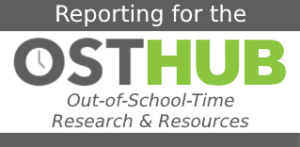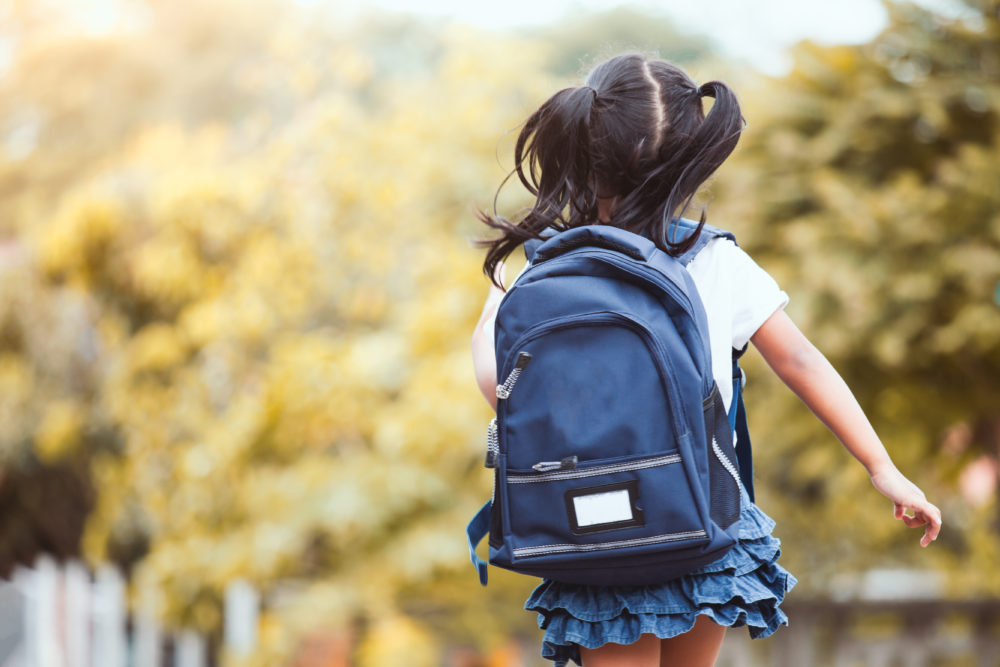As $122 billion flows into American education from the American Rescue Plan, some kids and families are beginning to feel the impact this summer.
The money provided by Congress to address pandemic recovery is funding summer learning programs and summer camps, many through partnerships between schools and community organizations.
In the small town of Perry in north central Oklahoma, kids splash in the pool, learn water safety and walk to the library and a local martial arts studio as part of a free or low-priced YMCA day camp subsidized by American Rescue Plan funds.
Oklahoma is one of about a dozen states that have already channeled the money into summer enrichment.
that have already channeled the money into summer enrichment.
In May, Oklahoma’s Department of Education announced that $6 million of the $14 million earmarked for summer enrichment would be divided between the state Alliance for Boys & Girls Clubs and the Oklahoma State Alliance of YMCAs.
The two organizations were chosen because they had the infrastructure to ramp up programs quickly, said Paula Wackenheim, executive director of the Oklahoma Alliance of YMCA’s. The 12 YMCAs in the state will have 16 new sites, and most are providing free meals through the USDA Summer Food Service Program.
“The goal is to expand access and remove barriers to summer programming,” Wackenheim said.
After a year of isolation because of COVID-19, “it’s the opportunity to get kids physically active, engaging with their friends again, engaging with groups, and being around each other,” she added
Addressing the social emotional fallout of the pandemic
Shea Boschee is chief executive officer of the Noble County Family YMCA in Perry, and a mother of four children.
Her 12-year-old daughter and 14-year-old son attended school remotely this past year while living with Boschee’s 99-year-old grandmother, whose health they were safeguarding. It was a year of worry and uncertainty, Boschee said.
Now, Boschee says her daughter is anxious about entering seventh grade after so much time out of school.
With the nearly $3 million they received, Oklahoma YMCAs are trying to address the social, emotional, academic and health impacts of COVID-19, Wackenheim said.
The Noble County Family YMCA used some of its money to train day camp counselors to help students communicate their feelings and experiences.
Oklahoma’s education department has directed summer enrichment programs to take a holistic approach. Programs can enhance kids’ academic performance and general well-being when they engage kids in their areas of interest, according to guidance issued by the department. It suggested that programs offer music, art, and dance; take kids on field trips; go to museums; visit colleges; go to state parks; and involve kids in community projects.
Catching up on academics
While student enrichment is one use of American Rescue Plan funds, academic recovery is another. Ten percent of the American Rescue Plan funding goes to state education departments, and the remaining 90% directly to school districts, which then make their own decisions.
Almost all large urban school districts across the country are offering some kind of summer school, said Bree Dusseault, who directs a research team at the Seattle-based Center on Reinventing Public Education (CRPE).
“This is a significant increase since last summer,” she said.
Districts are widening the scope of summer school and offering it to more students. “They’re prioritizing learning recovery as well as student well-being and re-engagement with the school,” Dusseault said.
CRPE reviewed the plans of 100 large school districts and found that 97 are offering summer school. Twenty-eight of the 100 are using COVID relief dollars to fund it.
The School District of Philadelphia, for example, is using American Rescue Funds to expand its summer programming to serve 15,000 students.
Schools are providing academic classes but also working with out-of-school time providers to add activities.
“They’re struggling with structure; they’re struggling with pace and with being attentive. So there’s a lot of extra effort this year to kind of help kids re-socialize,” said Lorna Smith, chief executive officer of Horizons National.
Districts are “leveraging their community partners and community-based organizations who, at the end of this year, may actually have a stronger relationship with students than the school,” Dusseault said.
Tulsa, Oklahoma, is offering summer classes to 11,000 students, or one-third of its 2020-21 enrollment, up from 5,000 students two years ago.
Summer school programs across the country, funded by American Rescue dollars, have taken on a decidedly summer camp flavor by including arts, crafts and sports.
South Carolina is using the funding to provide summer school to 33,000 elementary schoolchildren, up from about 10,000 in a normal year, state Superintendent of Education Molly Spearman told a local TV news station. In many districts, summer school takes the form of summer reading camp, she said.
Targeting the most vulnerable
But while districts are adding enrichment activities to engage students, they may be failing to target specific groups likely to have fallen behind academically, such as English language learners and special education students, the CRPE review found.
Less than half the 100 districts reviewed offered summer learning specifically for students who were underperforming, according to the report.
Horizons is a New Haven, Connecticut-based national nonprofit serving students who are performing below grade level.
It has developed its own model of mixing academic support with wider learning and engagement, and has been able to gain American Rescue Funds to expand its work in two states.
This summer, Horizons is opening a new site for as many as 80 k-3rd grade students on the campus of Albertus Magnus College in New Haven.
“It’s been a scramble to be honest, because we’re having to put a program together in about a quarter of the time that we’d normally have to start a new program, “ said Lorna Smith, chief executive officer of Horizons National.
The new site is a stone’s throw from Yale University and the many museums and cultural offerings in the area. By contrast, more than a quarter of the residents of New Haven live below the poverty level and 44% of families in the public school system receive SNAP benefits.
Connecticut took an early lead in making funds available directly to summer program providers. In April, the governor announced $11 million would be used to offer expansion grants of up to $25,000 and innovation grants of up to $250,000.
Horizons received $158,000 to open its new site, and six of its nine existing affiliates in Connecticut received grants to expand.
Horizons has more than 60 sites in 19 states across the country.
Each affiliate offers a summer learning program hosted by a college or private school and funded in part by local philanthropy. The same kids are encouraged to return each summer for up to nine years.
Certified teachers give reading and math instruction to small groups of no more than five students during the mornings. In the afternoon, kids swim, dance, visit local museums and other attractions and have adults from the community come speak to the group.
A Horizons site at St. Richard’s Episcopal School in Indianapolis, Ind., was awarded $1.05 million. Among other things, the money will double the summer pay of teachers — important in recruiting teachers this summer — and will be used to add a counseling program, Smith said.
She said counseling is important because sites are reporting that kids are having difficulty.
“They’re struggling with structure; they’re struggling with pace and with being attentive,” Smith said. “You’re dealing with things like running in the halls and bumping into each other, talking over teachers, not remembering how to participate in a classroom, getting really exhausted early in the day, or not being able to focus in on the academics. So there’s a lot of extra effort this year to kind of help kids re-socialize.”
Smith hopes states and districts will use American Rescue funds strategically over a three- to four-year period and collect evidence of impact in order to be more effective at helping students. Funds must be allocated by 2024.
Dussealt wants to see the funding used in innovative ways to advance equity among students.
“This is a good time for districts to be reimagining and redeploying a lot of funds to try to make their system work better and more equitably for all students,” she said.




























